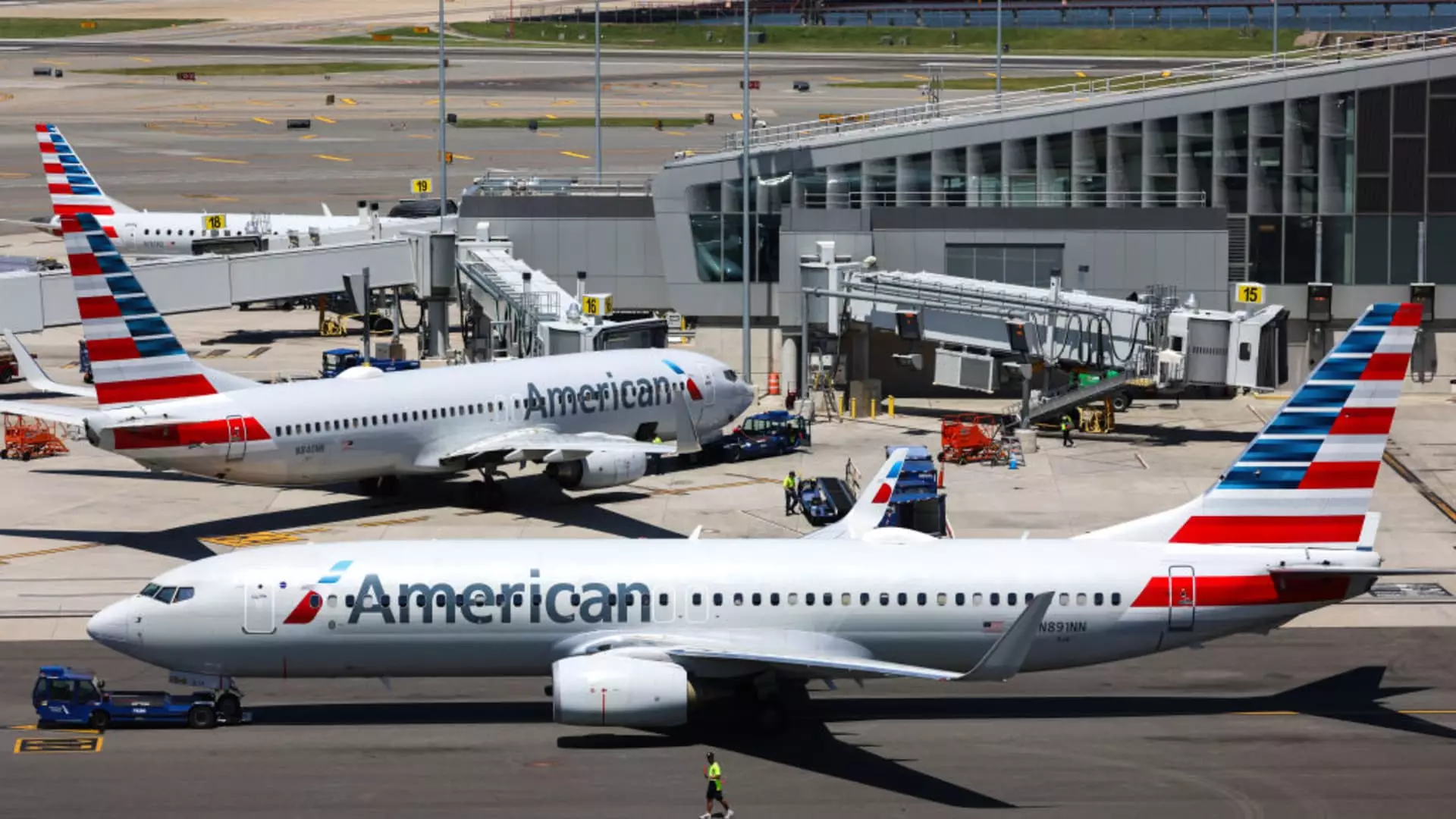In a significant move that could reshape the landscape of credit card partnerships within the airline industry, American Airlines is reportedly negotiating with Citigroup to become its exclusive credit card partner. This potential shift would mean severing ties with Barclays, a relationship that has endured since the airline’s merger with US Airways in 2013. Industry insiders reveal that American Airlines aims to consolidate its loyalty program under a single issuer, a strategy designed to maximize revenue and streamline operations. This development comes at a time when the competitive dynamics among banks are intensifying, and the implications for both American Airlines and its customers could be profound.
The Dynamics of Co-Brand Credit Card Deals
Co-brand credit card arrangements represent a fiercely contested sector, with numerous stakeholders vying for advantageous terms. Airlines, retailers, and hotel chains are engaged in complex negotiations aimed at optimizing profitability while meeting customer needs. For American Airlines, aligning with a single bank could enhance revenue generation from its loyalty program. By generating substantial income through these partnerships, airlines are better positioned to weather economic fluctuations and shifts in consumer behavior, particularly notably seen during the COVID-19 pandemic. While passenger traffic plummeted, loyalty programs continued to thrive as consumers remained loyal to their credit card spending habits.
Despite having the largest loyalty program among U.S. carriers, American Airlines has historically struggled in terms of earning revenue from its credit card arrangements. A recent comparison highlighted that Delta Air Lines has outperformed American significantly, raking in nearly $7 billion from its American Express partnership compared to American’s $5.2 billion. This disparity underscores the pressure on American to renegotiate its terms for optimal financial performance moving forward.
Proceedings surrounding this negotiation are sensitive, laden with implications for both parties. While Citigroup may possess a favorable position due to its track record of catering to wealthier consumers—whose spending patterns yield a better return for the airline—securing this partnership is not without potential hurdles. Regulatory approval from entities such as the Department of Transportation could complicate or even hinder the agreement. American Airlines remains cautious, acknowledging the possibility that the partnership with Barclays may persist if negotiations with Citigroup encounter substantial roadblocks.
The significance of these co-brand programs cannot be understated. They not only provide airlines with vital income sources but also foster customer loyalty by offering reward opportunities that encourage ongoing spending. Therefore, the resolution of this negotiation has far-reaching consequences for how American Airlines will engage its customers.
Citigroup appears to have the competitive edge in this negotiation, possessing a more favorable demographic of cardholders compared to Barclays. This demographic distinction could translate into higher spending and lower default rates, particularly as Citigroup seeks to pivot towards enhancing profitability within its card division. Jane Fraser, the bank’s CEO, has been steering Citigroup toward aggressive growth strategies, indicative of its positioning within the market. Should the partnership be formalized, a multi-year contract ranging from seven to ten years is likely, offering Citigroup ample opportunity to reap the financial benefits of the partnership once initial investment costs have been covered.
Conversely, Barclays executives have indicated plans to recalibrate their co-branding strategy, seeking partnerships that extend beyond airlines. This diversification aim highlights the challenges conventional banks face in maintaining profitability within a highly competitive landscape. As they pivot away from traditional partners, Barclays risks losing a lucrative segment of customers who are integral to their business model.
Should American Airlines solidify its partnership with Citigroup, customers can likely expect improved products tailored to enhance their experience within the AAdvantage loyalty program. Citigroup’s commitment to scaling up its credit card offerings could lead to innovative features that amplify customer engagement. This prospective collaboration highlights a broader trend in the airline industry where technology and financial services are intersecting more profoundly, crafting a future wherein loyalty programs continue to evolve.
The potential collaboration between American Airlines and Citigroup not only stands to impact the financial viability of the airline but also signals a notable shift in how loyalty programs might be structured in the future. The unfolding story presents a nuanced interplay of strategic interests that will resonate through both the airline and banking sectors in the coming years. As negotiations progress and stakeholders navigate the complex landscape, the outcomes remain uncertain but ultimately pivotal for both American Airlines and its loyal customer base.

